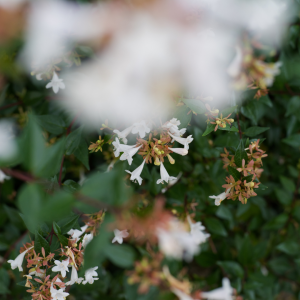Spring flowering bulbs are a must for every garden. They provide cheerful early-season color at a time when it is most needed, both in the landscape and by our Winter weary souls. Daffodils are some of the most delightful Spring flowering bulbs! What makes them so delightful is their ease of care, diversity in their flower color, size, shape and fragrance, resistance to pests and disease, and their carefree ability to increase and return year after year, with little effort.
Daffodil Selection
Did you know that there are over 32,000 registered cultivars of daffodils? This number gives us some indication of the immense diversity of this plant. Daffodils are classified into 13 separate divisions as noted by the Royal Horticulture Society https://www.rhs.org.uk/plants/pdfs/plant-registration-forms/daffhortclass.pdf and some varieties are easier to find than others. As you become more familiar with, and addicted to, daffodil cultivation, you will never get tired of adding more of these bulbs to your collection, possibly seeking out a few hard-to-find daffodils.
Note: All daffodils are narcissus, but not all narcissus are daffodils. For the sake of simplicity, we will refer to all narcissus and daffodils mentioned in this article as daffodils. Their care is the same and separating them will only complicate matters.
Daffodils require a cold period to bloom. Most daffodils will flower best in USDA Hardiness Zone 7 and lower. If you live in USDA Hardiness Zone 8 and higher, there are some daffodils that will do well in your area, or you may purchase pre-chilled bulbs. It will help to work with your local Master Nursery® Garden Center to determine which daffodils do best in your particular zone.
All daffodils bloom in the Spring. Within the Spring season, some will bloom early, mid-season, and late. Knowing when a particular daffodil flowers, will allow you to plant varieties for a succession of blooms to extend the whole season. As you begin growing daffodils, it may be easiest to choose some of the most popular and easy to find varieties
Early-season Bloomers
- Barrette Browning – white petals with small orange cup, 1 to 2 feet tall, lightly fragrant.
- Rijnveld – golden yellow, 15 inches tall, delightfully fragrant.
- Tete a Tete – buttercup yellow, multi-flowering, miniature at 6 to 8 inches tall, fragrant.
Mid-season Bloomers
- Dutch Master – large, golden-yellow daffodil, 1 to 2 feet tall, lightly fragrant.
- Ice Follies – creamy white petals with a pale-yellow cup, 20 inches tall, lightly scented.
- Pink Charm – ivory petals with a coral-colored cup, 18 inches tall, fragrant.
- Professor Einstein – snow white petals with a reddish-orange cup, 16 to 18 inches tall, fragrant.
Late-season Bloomers
- Acetaea – pure white petals with a small gold cup rimmed in red, 1 to 1 ½ feet tall, fragrant.
- Cheerfulness – small flowering, multi-flowering and multi-stemmed, white double flowers with pale yellow flecks, 1 to 2 feet tall, very fragrant.
- Tahiti – large, double flowering daffodil, bright golden-yellow with bright orange ruffled cup, 16 inches tall, fragrant.
- Thalia – downward facing, pure white flowers with 2 to 3 flowers per stem, 1 foot tall, very fragrant.
Planting Daffodils
Daffodils are purchased and planted in the Fall for Spring blooms and are extremely easy to plant.
- Plant daffodils in a sunny to part-shady, well-drained site.
- Daffodils may be planted in single holes, rows, or in groupings. Amend the soil with Master Nursery® Bumper Crop® Soil Builder [Eastern & Midwestern Regions | Western Region] by mixing 3 inches of the soil builder into 6 to 8 inches of native soil. This will help increase drainage and nourish bulbs.
- Place daffodil bulbs 6 inches deep, pointy side up.
- Mix one tablespoon of Bone Meal [Western Region] with the soil in the bottom of the planting hole; see product instructions. Cover this mixture with 1 inch of soil. Place the bulb into the hole then backfill with the Master Nursery® Bumper Crop® Soil Builder and native soil mixture. This will help stimulate strong root development.
- No need for deer or rodent protection, these bulbs are pest proof!
- Water the area after planting daffodils and wait for Spring!
With such wide diversity in one group of flowering bulbs, considerable beauty, ample fragrance, significant bloom time, and ample pest resistance, wouldn’t you agree that daffodils are delightful?





































